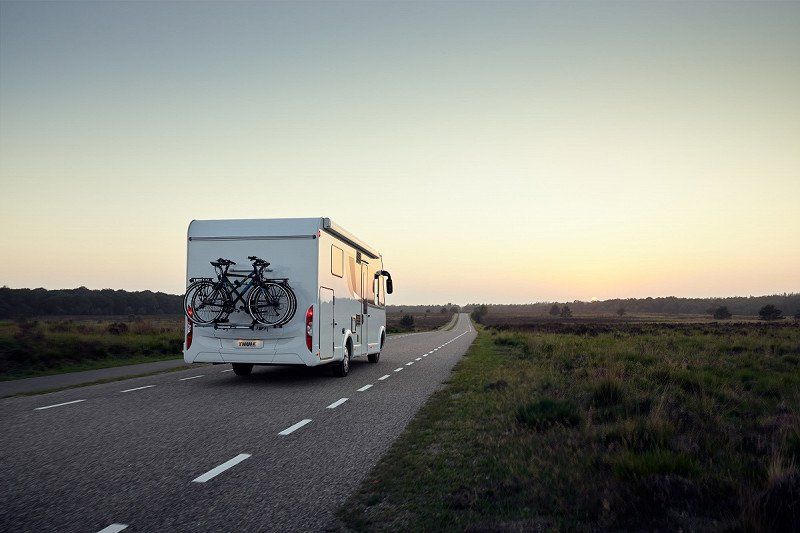When transporting bikes on a rear rack, you will need to know the rear axle load of your motorhome or campervan. A key factor when calculating the rear axle load is the weight of the rear rack (including the loaded items it is carrying) as it will have an effect on the lever arm. After all, a rear rack shifts the centre of gravity of the entire vehicle to the back, which could take the load off the front axle and, therefore, be dangerous. Why dangerous? Because it influences steering precision as well as traction (with front-wheel drive). And, on the whole, that means: driving safety.
Formula for calculating the rear axle load
The rear axle load, caused by a loaded rear bike carrier, can be calculated using the relatively simple formula: R = L x D ÷ W. "R" stands for the rear axle load, "L" for the weight of the transported items/load, "D" for the distance between the carrier and the front axle (in cm) and "W" for the wheelbase of the vehicle (also in cm).
As an example, let's assume the scooter and carrier weigh 150 kg. Multiply this by 470 cm, the distance to the front axle, measured from the centre of the rear rack (scooter contact points) to the wheel hub, and divide the result (70,500) by the wheelbase of 320 cm – and we get just over 220 kg. This is the effect that the rear load lever arm will have on the rear axle. And that is around 70 kg more than the actual weight of the scooter/rear rack combo, which can compromise driving safety. This can be avoided by fitting air suspension, which lifts the rear when loaded and counteracts the negative shift in the centre of gravity.





